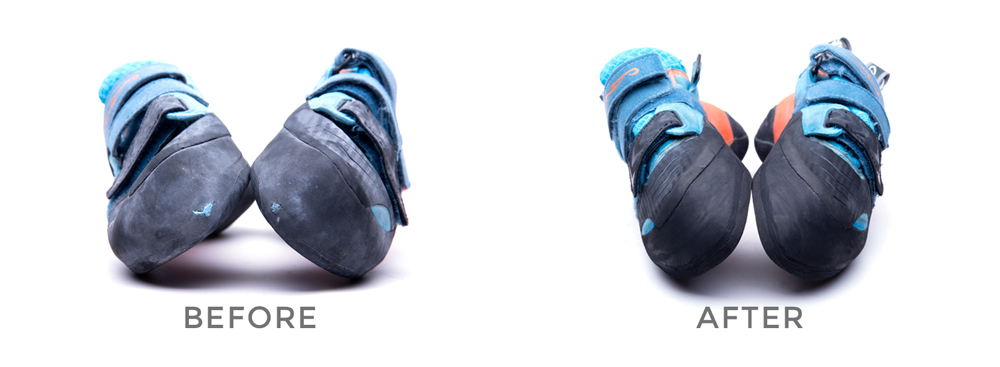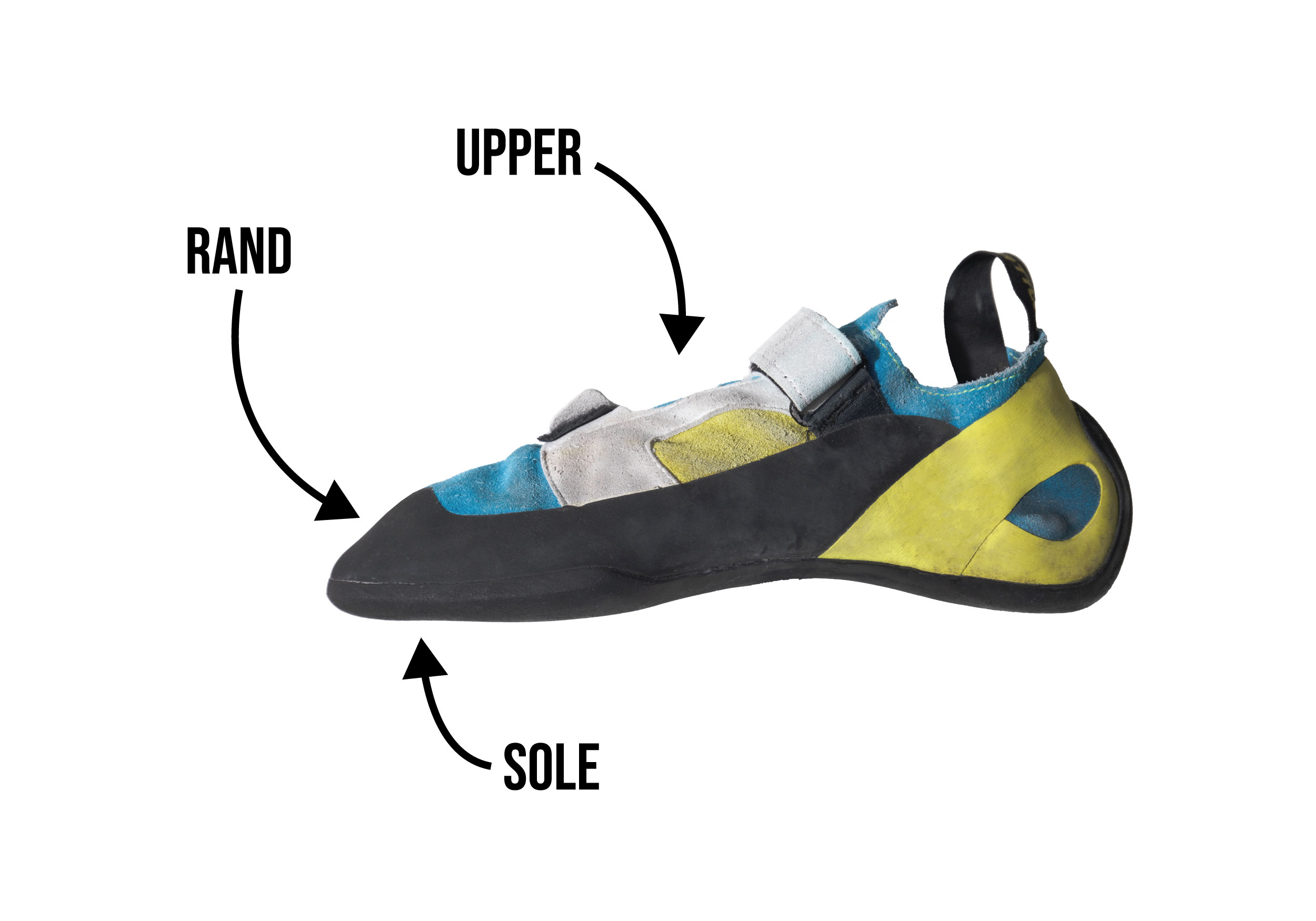Resoling Climbing Shoes
Is it worth resoling? When is the right time to do so? Can i resole more than once? These are all questions you might have if it is your first time thinking about resoling your shoes. Let's cover the basics first.
To understand what resoling does to your shoe, we need to understand the anatomy of the climbing shoe. There are 2 main components:
1. the sole: it is the bottom part of the shoe, it is the part that gets used most, especially in the big toe area.
2. the rand: The rand is the thin rubber which wraps around the toe and protects the upper from excess wear. The sole is glued to the rand and the underside of the upper. The rand for example is not made to withstand the same use as the sole, it is designed to hold your toes down. This means that once you wear off your sole and start climbing on the rand, the shoe loses it's function.
(picture on the right) --> Rand on the left, sole on the right; also notice how the sole is getting thinner towards the toe area
Between the rand and sole is a clear visible line, where the sole was added, this line indicates when you are due for a resole. If you notice your sole is worn down so that you are now climbing on your rand, stop climbing on these shoes and send them to us for sth called a half sole repair – this is the cheapest repair option. If you have not stopped climbing on your worn out shoes soon enough, you will wear out your rand and possibly create a small hole. Stop climbing on these shoes immediately and send them for a half sole repair plus rand repair. This is slightly more expensive but we can still save your shoes!
The climbing shoe is the most important piece of gear there is. A good shoe combined with good foot work is what keeps you attached to the rock. They do so by leaving a bit of rubber behind every time you put pressure on a foothold, just like the wheels of a car do on the road. The majority, 90%, of sole wear takes place in the big toe area. That is the power point when climbing so it should also be the point where you assess the sole. Most shoes start off with a 4mm sole that gradually gets thinner and usually the rest of the shoe stays in a pretty good shape. That is why many climbers started looking into resoling, all they needed was a bit of fresh rubber in the big toe area to get a basically new shoe. That brings us to the first question raised earlier, is it worth resoling?
Assuming (optimistically) that you send your shoes in to be resoled just at the right time when they do not need any extensive repair but just replace some of the rubber in the front. Hitting that perfect timing, you would look at around 30-35EUR for the new rubber, adding the shipment fees once for you to send them over and once for the company to send them back, that adds another 15-20EUR, leaving you with a total of approximately 55EUR. Is that worth it? That mainly depends on the shoes and the climber. If you are looking to resole a pair of La Sportiva Skwamas that are still in great condition, then paying 55EUR is an amazing deal for a new sole considering a new pair of shoes would set you back around 140EUR. If however, you are looking to resole an old worn out pair of shoes that might not even have been that great to begin with, then paying that resoling price might not be worth it, some companies will even let you know when they think it is not worth repairing depending on the work required to resole them.

The ideal timing to resole is the most important factor, resole too early and you are waisting money and rubber, resole too late and the shoes might not be salvageable anymore and you're paying more. The main thing to watch out for is that you are climbing on the sole of your shoe. Once the sole wears off to the point of receding and exposing the rand rubber it is time to resole. Should you ignore this and continue climbing using the rand, the repair process is first of all going to cost more, and you are running the risk of the shoe losing it's functionality and performance.

This shoe is long overdue for a resole. The rubber on the sole has receded, exposing more of the rand which has now been damaged from having been climbed on for too long.
How many times can you resole your shoes depends entirely on how well you take care of them and how well you time the resoling. Do not wear your shoes when you're not climbing, don't walk around in them, take them off when belaying because they need time to air out and every step you make your leaving micro rubber behind. In general, if you take good care of your shoes you can look to resole them 3-5 times before their shape and performance are significantly impacted.
It is not easy in the beginning to identify when it is time to send them in for resole so feel free to come down to the shop where we can have a look at it and advise you in what to do.

